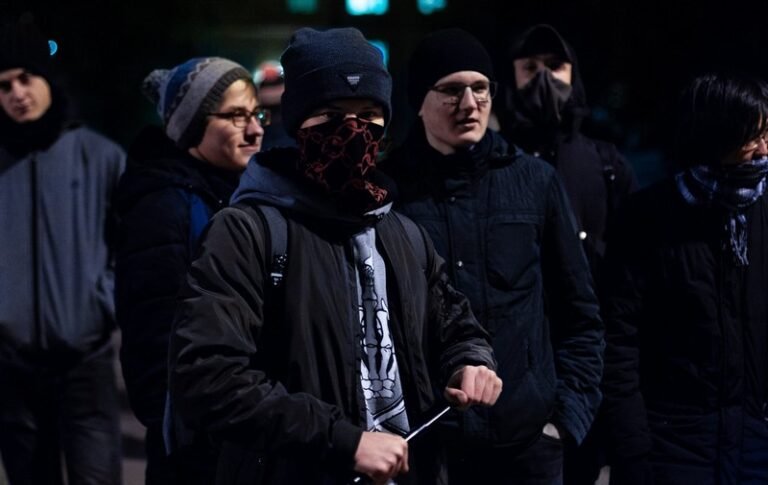Theoretical Perspectives on Crime and Deviance in Sociology
In the field of sociology, crime and deviance are two concepts that have been extensively studied and analyzed. These concepts are crucial in understanding the social dynamics and structures that shape human behavior. Sociologists have developed various theoretical perspectives to explain the causes and consequences of crime and deviance in society.
One of the most influential theoretical perspectives on crime and deviance is the functionalist perspective. According to this perspective, crime and deviance serve important functions in society. Functionalist theorists argue that crime and deviance contribute to social order by reinforcing social norms and values. They believe that the existence of crime and deviance helps to define and reinforce what is considered acceptable behavior in a given society.
Another theoretical perspective on crime and deviance is the conflict perspective. Unlike functionalists, conflict theorists view crime and deviance as a result of social inequality and power struggles. They argue that crime and deviance are a response to the unequal distribution of resources and opportunities in society. According to conflict theorists, individuals who are marginalized or disadvantaged are more likely to engage in criminal and deviant behavior as a means of survival or resistance against oppressive social structures.
A third theoretical perspective on crime and deviance is the symbolic interactionist perspective. Symbolic interactionists focus on the meanings and interpretations that individuals attach to their actions and the social interactions they engage in. They argue that crime and deviance are socially constructed and vary across different contexts and cultures. Symbolic interactionists emphasize the importance of labeling and social reactions in shaping individuals’ identities and behaviors. They believe that individuals who are labeled as criminals or deviants are more likely to continue engaging in criminal and deviant behavior due to the stigmatization and exclusion they experience.
In addition to these three major theoretical perspectives, there are also other perspectives that contribute to our understanding of crime and deviance. Feminist perspectives, for example, highlight the gendered nature of crime and deviance and the ways in which patriarchal structures contribute to the victimization of women. Postmodern perspectives challenge the idea of a universal truth and argue that crime and deviance are subjective and context-dependent.
It is important to note that these theoretical perspectives are not mutually exclusive, and many sociologists combine elements from different perspectives to develop a more comprehensive understanding of crime and deviance. Each perspective offers unique insights into the complex social phenomena of crime and deviance, and together they contribute to a more holistic understanding of these issues.
Social Factors Influencing Crime and Deviance in Society
In the field of sociology, crime and deviance are two concepts that are closely intertwined. Crime refers to any behavior that violates the laws of a particular society, while deviance refers to any behavior that goes against the norms and values of a society. Both crime and deviance are social constructs, meaning that they are defined and understood within the context of a specific society. Understanding the social factors that influence crime and deviance is crucial for sociologists and policymakers alike.
One of the key social factors that influence crime and deviance is social inequality. Societies that have high levels of inequality tend to have higher rates of crime and deviance. This is because individuals who are marginalized or disadvantaged in society may turn to criminal or deviant behavior as a means of survival or as a way to express their frustration with the existing social order. In these societies, crime and deviance can be seen as a form of social protest or resistance against the prevailing power structures.
Another social factor that influences crime and deviance is socialization. The process of socialization refers to the ways in which individuals learn the norms, values, and behaviors of their society. When individuals are socialized into a society that has high levels of crime and deviance, they are more likely to engage in such behavior themselves. This is because they have internalized the belief that such behavior is acceptable or even expected within their social group. For example, if a child grows up in a neighborhood where drug dealing is common, they may come to see this behavior as normal and may be more likely to engage in it themselves.
The media also plays a significant role in shaping perceptions of crime and deviance in society. The media often sensationalizes crime and deviance, focusing on the most extreme and shocking cases. This can create a distorted view of reality, leading individuals to believe that crime and deviance are more prevalent than they actually are. Additionally, the media often portrays certain groups, such as racial or ethnic minorities, as being more prone to criminal or deviant behavior. This can contribute to the stigmatization and marginalization of these groups, further perpetuating the cycle of crime and deviance.
Social control is another important social factor that influences crime and deviance. Social control refers to the mechanisms and institutions that society uses to regulate and control behavior. These mechanisms can include formal institutions such as the criminal justice system, as well as informal mechanisms such as family, peer groups, and schools. When social control is weak or ineffective, individuals may be more likely to engage in criminal or deviant behavior. This can be seen in societies where there is a lack of trust in the criminal justice system or where there are high levels of corruption.
Types of Crime and Deviance: Exploring Different Categories
Crime and deviance are two concepts that are often discussed in the field of sociology. While they are related, they are not interchangeable terms. Crime refers to behavior that violates the law, while deviance refers to behavior that goes against societal norms. In this section, we will explore different categories of crime and deviance, shedding light on the various ways in which these phenomena manifest in society.
One category of crime is street crime, which includes offenses such as theft, assault, and drug-related crimes. Street crime is often associated with lower socioeconomic status and is more prevalent in urban areas. It is important to note that street crime is not limited to any particular group or demographic, as individuals from various backgrounds can engage in such activities.
Another category of crime is white-collar crime, which involves non-violent offenses committed by individuals in positions of power or authority. Examples of white-collar crime include embezzlement, fraud, and insider trading. Unlike street crime, white-collar crime is often associated with higher socioeconomic status and is more prevalent in corporate or business settings. This type of crime can have far-reaching consequences, as it can lead to financial loss for individuals and organizations.
Cybercrime is a relatively new category of crime that has emerged with the advancement of technology. It involves criminal activities conducted online, such as hacking, identity theft, and online fraud. Cybercrime poses unique challenges for law enforcement agencies, as it often transcends national boundaries and requires specialized knowledge and resources to combat effectively.
In addition to crime, deviance encompasses a broader range of behaviors that go against societal norms. One category of deviance is sexual deviance, which includes behaviors such as exhibitionism, fetishism, and pedophilia. These behaviors are considered deviant because they deviate from the accepted norms and values regarding sexual behavior.
Another category of deviance is substance abuse, which involves the excessive and harmful use of drugs or alcohol. Substance abuse is considered deviant because it goes against the societal norms regarding the responsible use of substances. It can have detrimental effects on individuals’ physical and mental health, as well as their relationships and overall well-being.
Political deviance is another category that involves behaviors that challenge or oppose the existing political system. This can include acts of protest, civil disobedience, or even terrorism. Political deviance is often driven by a desire for social change or the redress of perceived injustices. While some acts of political deviance may be seen as legitimate forms of dissent, others may be considered criminal and pose a threat to public safety.
Finally, there is cultural deviance, which refers to behaviors that are considered deviant within a particular cultural context. What may be considered normal or acceptable in one culture may be seen as deviant in another. Examples of cultural deviance include practices such as polygamy, cannibalism, or female genital mutilation. These behaviors challenge the dominant cultural norms and values and may be subject to legal sanctions or social ostracism.
The Role of Social Control in Managing Crime and Deviance
Crime and deviance are two concepts that are closely related in the field of sociology. While crime refers to behavior that violates the law, deviance encompasses a broader range of actions that go against societal norms and expectations. In understanding these phenomena, it is crucial to examine the role of social control in managing crime and deviance.
Social control can be defined as the mechanisms and processes through which societies regulate and maintain order. It encompasses both formal and informal means of ensuring conformity to societal norms. Formal social control is exercised through institutions such as the legal system, while informal social control operates through socialization, peer pressure, and the internalization of societal values.
One of the primary functions of social control is to prevent and manage crime. The legal system, as a formal mechanism of social control, plays a crucial role in this regard. Laws are established to define what is considered criminal behavior and to prescribe punishments for those who violate these laws. By setting clear boundaries and consequences, the legal system aims to deter individuals from engaging in criminal activities.
However, social control is not solely reliant on the legal system. Informal mechanisms of social control also play a significant role in managing crime and deviance. Socialization, for instance, is a process through which individuals learn societal norms and values. Through family, education, and other social institutions, individuals are taught what is considered acceptable behavior and what is not. This internalization of norms helps prevent individuals from engaging in deviant or criminal behavior.
Peer pressure is another informal mechanism of social control that influences individuals’ behavior. People tend to conform to the expectations and norms of their social groups to avoid rejection or disapproval. This pressure to conform can act as a deterrent against engaging in deviant or criminal activities. Additionally, communities often develop their own informal mechanisms of social control, such as neighborhood watch programs, to prevent and manage crime.
While social control is essential in managing crime and deviance, it is not without its limitations and criticisms. One criticism is that social control can be used to maintain existing power structures and perpetuate social inequalities. The legal system, for example, has been accused of disproportionately targeting marginalized groups, leading to the overrepresentation of certain populations in the criminal justice system.
Moreover, social control can sometimes stifle individual freedom and creativity. The pressure to conform to societal norms may discourage individuals from expressing their unique identities or pursuing unconventional paths. This tension between social control and individual autonomy is an ongoing debate in sociology.
The Consequences of Crime and Deviance on Individuals and Society
Crime and deviance are two concepts that are closely related in the field of sociology. While crime refers to behavior that violates the law, deviance encompasses a broader range of actions that go against societal norms and expectations. Both crime and deviance have significant consequences on individuals and society as a whole.
One of the most immediate consequences of crime and deviance is the impact on the individuals involved. For those who engage in criminal behavior, there is a risk of legal punishment, such as fines, imprisonment, or even the death penalty in some cases. This can have severe consequences on their lives, including the loss of personal freedom, damage to their reputation, and limited future opportunities.
Furthermore, individuals who engage in deviant behavior may face social stigma and ostracism from their communities. This can lead to feelings of isolation, low self-esteem, and a lack of social support. The consequences of these negative experiences can be long-lasting and may contribute to a cycle of further deviant behavior.
In addition to the individual consequences, crime and deviance also have a significant impact on society as a whole. One of the most obvious consequences is the erosion of social trust and cohesion. When individuals engage in criminal or deviant behavior, it undermines the social fabric that holds communities together. This can lead to a breakdown in social relationships, increased fear and suspicion among community members, and a general sense of insecurity.
Moreover, crime and deviance can have economic consequences for society. The costs associated with crime, such as law enforcement, judicial proceedings, and incarceration, place a significant burden on public resources. These financial costs can divert funds away from other important social programs, such as education and healthcare, which are crucial for societal well-being.
Furthermore, the fear of crime can also have economic consequences. When individuals perceive their neighborhoods as unsafe, they may be less likely to invest in businesses or property, leading to a decline in economic development. Additionally, the fear of crime can impact tourism and deter visitors from certain areas, further affecting local economies.
Crime and deviance also have broader social consequences. They can perpetuate social inequalities and reinforce existing power structures. For example, certain groups may be disproportionately targeted by law enforcement, leading to a cycle of criminalization and marginalization. This can further exacerbate social divisions and contribute to social unrest.
Crime and Deviance: A Comparative Analysis across Cultures and Time Periods
Crime and deviance are two concepts that have long been studied in the field of sociology. They are closely related but distinct phenomena that have significant implications for understanding social order and the functioning of societies. In this article, we will explore the definitions of crime and deviance, their similarities and differences, and how they can be analyzed comparatively across different cultures and time periods.
Crime can be defined as any behavior that violates a formal law or legal code. It is a social construct that varies across societies and is subject to change over time. What is considered a crime in one culture may not be in another, highlighting the importance of understanding crime within its cultural context. For example, in some societies, certain religious practices may be considered criminal, while in others they are protected under the right to freedom of religion.
Deviance, on the other hand, refers to any behavior that violates social norms. Unlike crime, deviance is not necessarily illegal, but it is seen as abnormal or unacceptable within a particular society. Deviance can range from minor infractions, such as breaking dress codes, to more serious transgressions, such as drug use or sexual assault. Like crime, deviance is also subject to cultural and temporal variations. What is considered deviant in one society may be perfectly acceptable in another.
Despite their differences, crime and deviance share some commonalities. Both concepts involve behaviors that are seen as problematic or disruptive to social order. They challenge the norms and values that underpin a society and can lead to social disapproval, stigmatization, and even punishment. Crime and deviance also have social consequences, as they can create fear and insecurity among individuals and communities.
To understand crime and deviance more comprehensively, sociologists often employ a comparative analysis across different cultures and time periods. This approach allows researchers to examine how definitions of crime and deviance vary across societies and how they change over time. By comparing different cultural contexts, sociologists can identify the social, economic, and political factors that shape the construction of crime and deviance.
For example, a comparative analysis may reveal that certain behaviors are criminalized in one society but not in another due to differences in cultural values or political ideologies. It may also shed light on how the enforcement of laws and the punishment of deviant behavior differ across cultures. Additionally, a comparative analysis can help identify patterns and trends in crime and deviance over time, providing insights into the social, economic, and technological changes that influence these phenomena.





